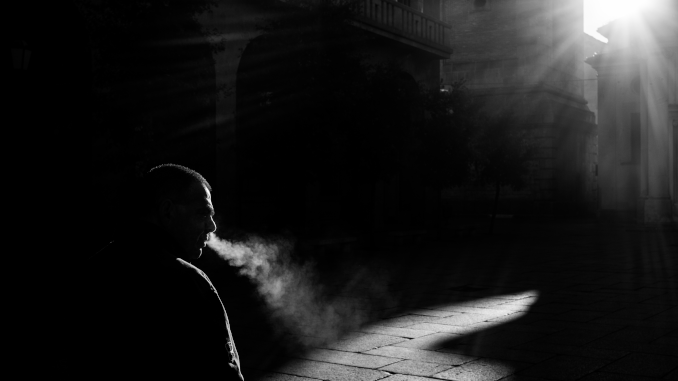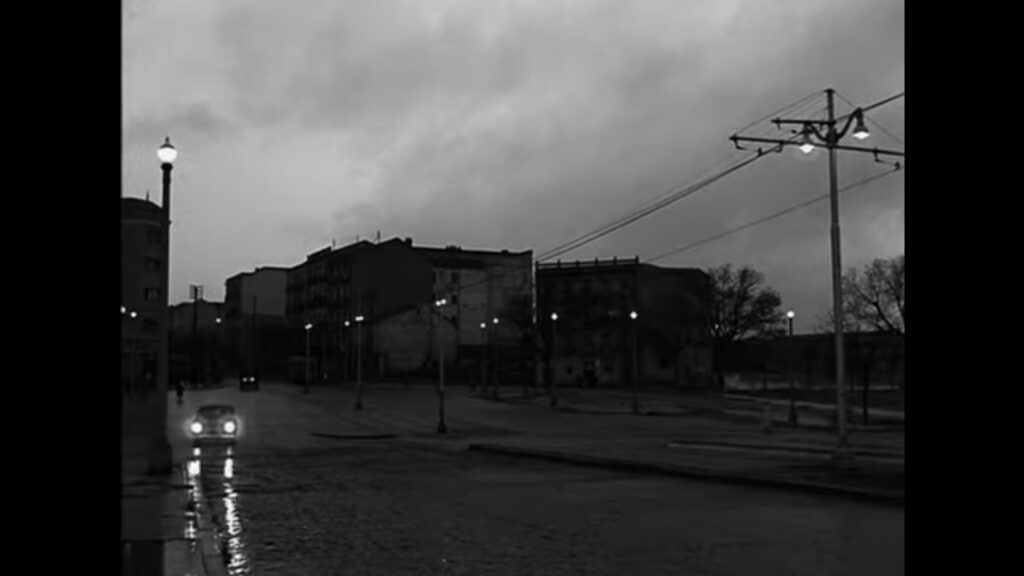
Today’s film is 1955’s “Death of a Cyclist,” a Spanish social realism/noir film starring Lucia Bosè (Maria José de Castro; dubbed into Spanish by Elsa Fábregas), Alberto Closas (Juan Fernandez Soler), Otello Toso (Miguel Castro), Bruna Corra (Matilda Luque), and Carlos Casavarilla (Rafael “Rafa” Sandoval). Directed by Juan Antonio Bardem; cinematography by Alfredo Fraile. Produced by Manuel Goyanes for Suevia Films; distributed by Janus Films. Edited by Margarita de Ochoa. Music by Isidro B. Maiztegui. Screenplay by Juan Antonio Bardem.
“Death of a Cyclist” has a run-time of 88 minutes and was released May 9, 1955 at the Cannes Film Festival, while its director Juan Antonio Bardem was imprisoned by the Francisco Franco regime. The film won the International Federation of Film Critics award at Cannes, and there was an international outcry for Bardem to be released. The film didn’t premiere in Spain until September 9, 1955. (It was the social realism of the film that got Bardem sideways with the government.)
Here’s a French trailer for the film, just to give you an idea of the visual storytelling:
The opening of the story is a lonely country road, where a cyclist moves from foreground to disappear over a rise in the background. We then see the top of a car approach where the cyclist vanished, swerve to that point, and then screech to a halt. The next shot is the other side of that rise, as the driver (Maria José) stops the car and she and her passenger get out to check on their victim, who’s not yet dead. At her insistence, they leave him suffering as they drive away.
IOW, we never see the crash and there’s absolutely no build-up of being introduced to the lovers before the accident of the title. The director didn’t intend for us to like these characters and he does everything in his power to ensure we don’t. This is the set-up for the social commentary of the movie: that the upper class gets away with behaving in ways which oppress the lower classes.
Here’s a shot of rain-slicked streets as the lovers arrive home after that fateful accident:

The filmmaker also wastes no time before introducing the blackmailer and his attempt to extort the couple for his own gain. The question soon becomes: how can he know what the two did, if it was an empty road?
The “B” story of this tale is that Juan Fernando Soler (the male half of the adulterous pair) is an assistant professor who causes female student Matilda Luque to fail her exam. He was perusing his newspaper as she worked at the blackboard when he saw an article about the cyclist killed by a fleeing car. He becomes distracted by this news and begins worrying about himself, cutting off the student and telling her to go away. She later goes to him about this, and he admires her honesty confronting the injustice that he’s done her. (While calling out the fact that he only has his job because of family connections.) It’s Matilda who causes him to reconnect to his idealistic youth and begin the process of atoning for his part in the cyclist’s death.
The A and B stories ultimately crash together, with tragic results.
The ending wasn’t as the director intended it, but I found it very satisfying, indeed; this is one of those instances when the censors created a better ending than we would’ve gotten otherwise. The social commentary of the story never became didactic, never detracted from the tale. I give this film 4.75 out of 5 unfiltered cigarette puffs.
Next week’s film is “Decoy” from 1946.

1 Trackback / Pingback
Comments are closed.